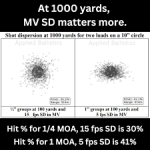You may be surprised with the method you used to find the lands. Depending on how much neck tension your brass had on the bullet, you could be in the lands still.
The lands start on a slope, so it is very easy to have no idea where youre at in relation to the lands if youre not using the "stick" method.
Dont necessarily have to remove the barrel IMO. Take the bolt out of your rifle, clean the chamber and throat. Put a cartridge in the chamber and push it home with your finger. Stand the rifle up on the butt, if the cartidge doesnt fall out by itself, you're in the lands. (Assuming the bullet runout isnt holding it in the free bore, and the shell itself isnt stuck.) There is a .001" window between being stuck in the lands, and not touching the lands.
Because the rifling starts very gradually(on a slope) with my hornady OAL gauge, if I lightly push the bullet into the rifling until it stops, I am easily .040" into the lands with a 15° slope starting the rifling.
Ultimately if you start wherever and move the seating depth to wherever and its shooting good, that's what counts. Knowing and starting at true 0 on the lands is going to be the least wasteful on components.
As a side note... I would recommend starting at true 0, minus .010".(or whatever is claimed as a good starting point for the bullet) And not touching the seat depth again until you have found the powder node. Once you have found the powder node, go ahead and make +/- .003 adjustments to tune it.
The problem with a recommended "go .030" off the lands" is.... most people likely truly dont have any idea where the land actually is. It is an arbitrary number that they're removing .030" from unless they know EXACTLY where the lands are. I think Speedys method tells a person EXACTLY where 0 is.
Someones .030" "off the lands" could very well still be .010" jam depending on how the starting point was derived. Some claim to run a .070 jump... is it actually .070... or did they jam it .040 into the lands to start and realistically it didnt start shooting good until they pulled it back .070 from their start...which would truly be a .030 jump.








































































